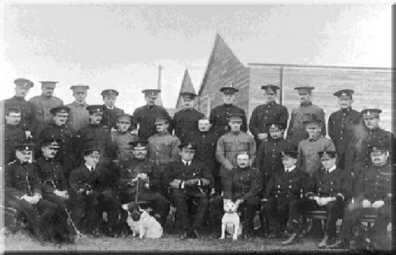|
Home The Beginning Inter War Years WW II Little Rissington Up to Date CFS Helicopters CFS Mascot Flying Instruction Formation Aerobatics Formations CFS 1985
Click on red text and pictures! |
A Short History - The Beginning The Central Flying School is the longest serving flying school in the world. This is a record of which we are understandably proud and the following web pages chronicle the main events in the school's history and describes its current organisation and tasks. The concept of a British military air force was born in 1911 when Herbert Asquith, the Prime Minister, instructed the Committee of Imperial Defence to examine the questions of naval and military aviation and suggest measures to create an efficient air force. The Committee recommended the formation of a Royal Flying Corps comprising a Military Wing, a Naval Wing, a Reserve, the Royal Aircraft Factory at Farnborough and the Central Flying School (CFS). Although the cost of CFS was to be borne equally by the Army and the Navy, its administration was the responsibility of the War Office. In compensation, a naval officer, Captain Godfrey Paine, RN was chosen to be the first Commandant. He was informed by the First Lord of the Admiralty, Winston Churchill, that he must learn to fly within two weeks if he was to take up the appointment. He successfully completed his somewhat rushed conversion at Eastchurch under the eye of Lieutenant Arthur Longmore , RN. CFS was formed at Upavon in Wiltshire on 12 May 1912. The primary aim was not to produce aviators as such, but professional war pilots. This was to be achieved by accepting for advanced training only men who already held a Royal Aero Club Certificate, although they were offered a refund of part of their expenses incurred in private tuition. Having obtained their Pilots Certificates in order to qualify for the course, the students were taught to fly all types of aircraft available at the school. The inventory then consisted of Maurice Farmans, Henri Farmans, Shorts, Avros and Bristol Bi-planes. No 1 course was completed on 5 December 1912 and graduates could carry out short cross-country flights and local flights of 20 to 30 minutes, at heights around 1500 feet. The ground training syllabus included theory of flight, map reading, strength of materials, military and naval aviation history, hints on flying and practical work on Gnome and Renault engines and aircraft repair . The standard for a pass was 50% in each subject and 60% overall.
Very soon aircraft began to take on a more military form and CFS quickly became one of the main centres for experimental and research flying. Bomb dropping experiments began, and in July 1914, a 14" torpedo was launched from a Short seaplane. One of the first tasks was to gain the confidence of commanders in the field by showing that the Royal Flying Corps was not just a fine weather Service, and it was with pride that the Secretary of State for War told the House of Commons in 1913, that CFS carried out experiments in flying in strong winds. What had been achieved was an aircraft with a maximum speed of 57 mph taking 16 minutes to cover 400 yards into the teeth of a gale. This was quite an advance, since only a year before it had been considered dangerous to fly in winds of 15 mph. By the outbreak of war in August 1914 the CFS had contributed 93 pilots to the Royal Flying Corps. A rapid expansion took place and by the end of 1915 the basic training policy was for all pupils to do their ab-initio flying at one of the Reserve Squadrons, and then pass on to CFS or to a service squadron for advanced training. A major fault of the Royal Flying Corps at this time was its lack of standardization. One of the main critics in the field was Major Smith-Barry,and in 1916 he put his thoughts on paper. (Philosophically, Smith-Barry's system was based not on avoiding potentially dangerous manoeuvres (as had been the case before) but on exposing the student to them in a controlled manner so that he could learn to recover from them, thereby gaining confidence and skill.) He wanted a School for Instructors in flying where all instructors would have their flying brought up to a high standard necessary to enable them to teach with confidence and ease, and where they would be given definite lines upon which to instruct. He also recommended the introduction of dual controls so that pupils could learn to fly to the limits of their aircraft. Smith-Barry was brought home from France and given command of a squadron at Gosport where he could put his ideas into practice. He soon had his school operating on dual controlled Avro 504Js , Belriots and Bristol Scouts. The standard of flying improved still more after the introduction of the Gosport tube which enabled the instructor to converse easily and comfortably with his pupil; a capability which had previously been restricted to the few moments of quiet before and during a stall. Pilot training became both quicker and more efficient and the system was adopted throughout the training school. In 1918 the Royal Flying Corps and the Royal Naval Air Service were amalgamated to form the Royal Air Force and as part of the reorganisation, in 1920 CFS became the Flying Instructors School tasked to carry on the work started at the School of Special Flying at Gosport. |
